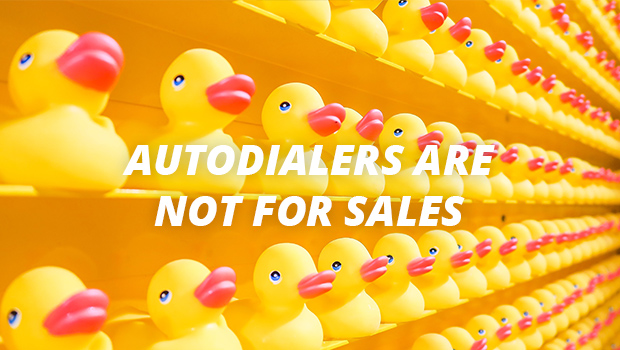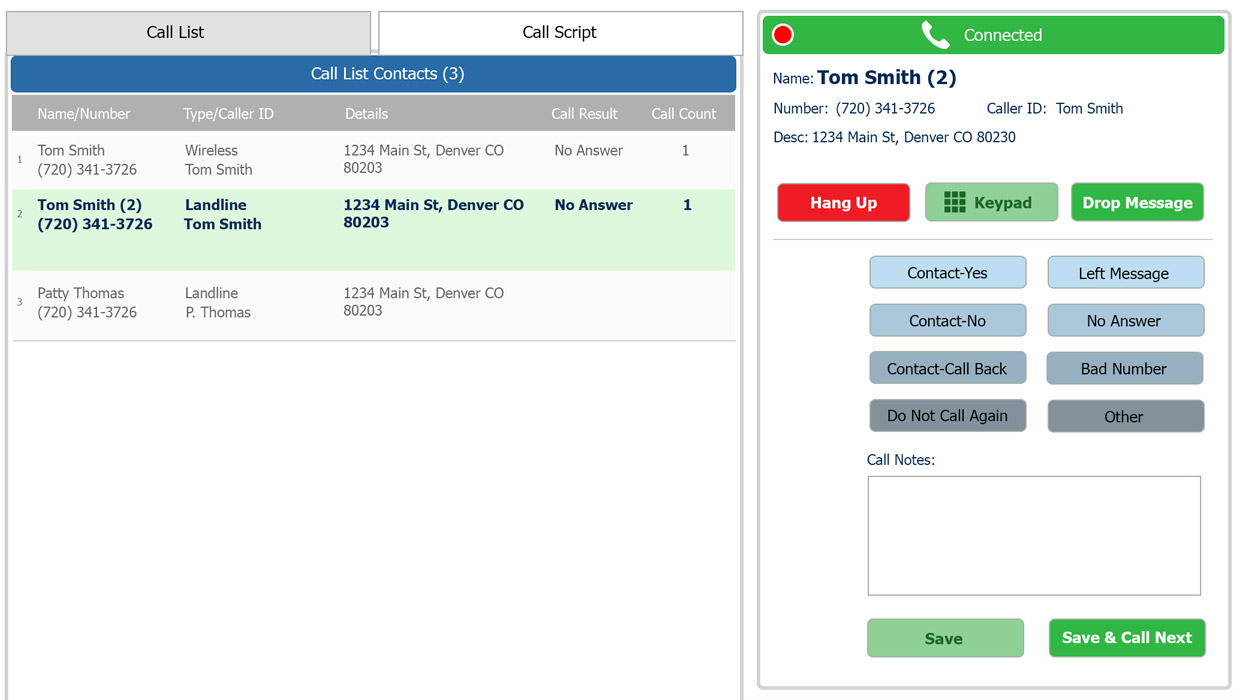
If you have a business that uses cold calling as a way to contact customers, you should be using a sales dialer to make your calls. Why? It will save you time and make your workflow more efficient. Choose wisely though. Your sales dialer should not be an autodialer.
Auto-dialing, predictive-dialing, and agent-assisted dialing are technologies better left to scammers and telemarketers, not salespeople. Autodialers are all about volume, making the most number of calls in the shortest amount of time. If you’ve spent any amount of time in working sales, you know making lots of calls is not the same thing as making quality contacts. Calls are just a number, contacts are opportunities.
Calls vs Opportunities
I’m sure you’ve heard the age-old sales advice – “it’s a numbers game”. If you make enough calls, you’ll eventually make contact, fill your pipeline, hit your goals, and generate sales. Here is the thing. This “advice” tends to focus on the wrong number in the game.
Yes, lead lists are still important, and yes, making calls is still important. However, some of the calling solutions available today are too efficient at making calls and not efficient enough at finding opportunities.
No matter where your lead list comes from, your reps must be able to quickly and effectively call through them to maximize ROI and maintain productivity. How you balance ROI and productivity is partially determined by the dialer technology you choose. Opportunities create ROI. Call rates, or calls per hour, determine productivity.
You can make a lot of calls and have sky-high productivity using an autodialer. That doesn’t mean you’re uncovering opportunities. If you’re dialing numbers manually your productivity will be low and your number of opportunities probably low as well.
If sales is “a number game”, be careful which number you focus on. Autodialers deliver high productivity but don’t guarantee ROI. In fact, autodialers can work against your ROI because they often create a bad call experience. Sales is hard enough, without your dialer making it harder.
Manual Dialing Destroys Productivity
If you’ve got more than 5 leads to call, nothing will kill your productivity quicker than manual dialing. The act of window-switching (moving between applications on a screen) accounts for 16 seconds of lost time per switch as you adjust your focus. If you’re calling a list of 200 contacts, and switch windows to grab the number from the list, research the lead in your CRM, then dial, you will lose 48 seconds per call, or 2.6 hours before you even get on the phone!
To have any kind of productivity when cold calling, you’ve got to use a sales dialer.
Autodialers Lead to More Problems
Has this ever happened to you? You answer a call, then wait through several seconds of silence before the person on the other end speaks. If so, then you’ve received a call from an autodialer. When this happened again, did you wait through those silent seconds or did you just hang up?
This is the problem with using autodialers for sales calls. You’re just as likely to lose your lead as you are to start a conversation with them. The seconds of silence is a big red flag that tells your lead to hang up. Why? Because every robo-caller, telemarketer, and scammer is calling them the same way, 10 times a day.
Automated dialers are made to contact as many people as possible in the least amount of time. Autodialers do this by dialing multiple numbers at once when one of the calls connects, the dialer passes it to any available agent.
Companies who want to provide an excellent customer experience, and who care about ROI, should stay away from any sort of auto-dialer for three big reasons.
- Those silent seconds are a hang-up signal to your lead.
- If the lead waits out the awkward seconds they are likely to be prejudiced against the call and give the rep little hope of getting any answer but a quick “no.”
- When the rep is connected to the call, they’ve had no time to research the lead before they’re thrust into a conversation. That might work for a customer service call, but it doesn’t make for successful sales calls.
The bottom line of using autodialers for sales calls is this, you will lose leads and lower the potential ROI of your list. When it comes to high value, complex sales that require an understanding of a customer’s needs and challenges, autodialers are not a fit.
Streamline the Calling Process
If manual dialing wastes too much time and autodialers create a bad customer experience, what type of sales dialer should your sales team be using?
The solution is using a preview dialer—it’s a happy medium between manual and automated dialing. A preview dialer automates number dialing for higher productivity, but only a single call at a time, so there is no silence while the call connects. The rep also controls the pace of the calls as they work through the list. They can pause between to review the next lead’s contact information and be ready to engage in an informed conversation before they initiate the call.
Preview dialers work best for sales because they eliminate time wasted on manual dialing and screen switching, which means productivity will be increased, and they preserve the quality of the customer experience, so ROI potential increases as well.
The BellesLink Contact Dialer is a preview dialer. It has a feature called Save & Call Next, which makes it a great choice for lead list cold calling.
Save & Call Next
Using the Contact Dialer the salesperson controls the pace of the dialing session. The Save & Call Next buttons are what they use to do that.
They might choose to move quickly to the next call because there was no answer and drop a pre-recorded voicemail message in the background while they make the next call. They also might pause between calls to research the lead. They might even need to save and exit the dialing session entirely and return to it later. All these scenarios are easy to handle in the Contact Dialer.

As each call is coming to an end, the sale person has three things to do.
Choose the deposition of the call by clicking one of the deposition buttons. Is this call a yes, a no, or a callback?
Enter a note about the call, if the deposition choice doesn’t provide enough information.
Choose to hang up the call and click Save to pause the session, or click Call Next to immediately dial the next number.
Choose the Right Sales Dialer
Don’t put so much faith in “the numbers game” that you become a business that’s great at making sales calls, but not so great at making sales. Choosing an autodialer means choosing to focus on quantity over quality. You might win sometimes with that strategy, but you’re not going to win as often as you could. That’s why ROI will be lower when you use an autodialer.
A preview dialer is a better choice for sales. It gives the salesperson making cold calls a better balance between quantity and quality, between productivity and ROI. It eliminates time wasted by manual dialing and screen switching, but it keeps the salesperson in control so they can deliver a great customer experience that uncovers opportunities and turns them into sales.
The BellesLink Contact Dialer is a preview dialer that is integrated with our excellent batch search. Learn more about it on our website.

